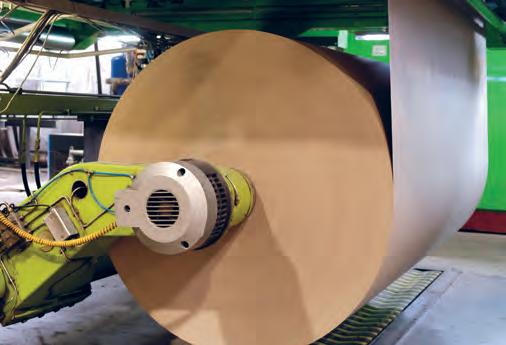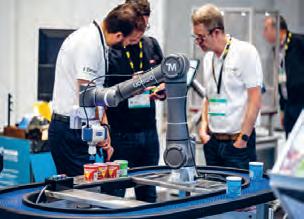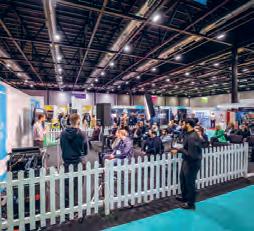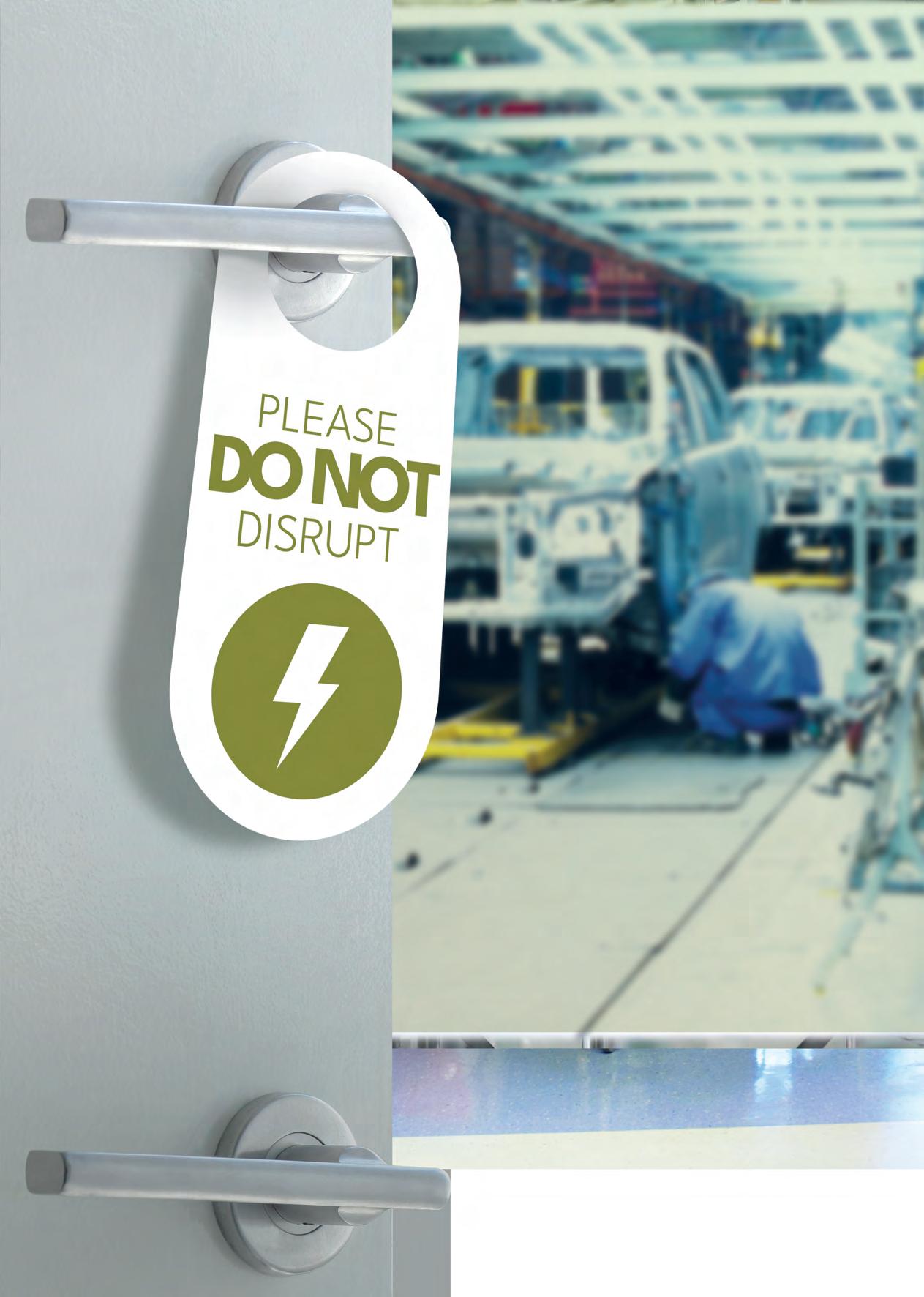
13 minute read
Balancing act
BALANCI NG
Sumeet Ladsaongikar, Partner at Kearney London, investigates the value chain trilemma of financial, resilience and sustainability performance
Advertisement
Eliyahu Goldratt must have loved trade-offs. In his work on the Theory of Constraints (TOC) in operations, he invented the evaporating cloud to address dilemmas; trade-offs where there was no acceptable compromise. He would have relished the challenge most CXOs find themselves in today; a trilemma on how to drive improved financial performance, supply resilience and sustainability impact, simultaneously (see Figure 1).
In this article, we will focus on the value chain trilemma as a concept, apply it to a subset of companies (industrial OEMs), and identify key levers to resolve this, based on our experience. Whilst we have focused on industrial OEMs for our analysis here, the trilemma is relevant for all sectors.
Industrial OEM value chains have unique characteristics that make them difficult to manage: Multiple value chains
(ETO/CTO) and corresponding supply models (ATO/MTS/MTO), long lead times often running into years, unclear or delayed demand signals, lack of flexibility and limited sustainability focus. In an increasingly volatile business and geopolitical environment, the impact of these challenges gets compounded, impacting growth, margins, resilience and sustainability.
Going from good to great In resolving this trilemma, some companies have done better than others. We analysed performance of 97 industrial OEMs ($1.9tn in market cap and $1.1tn in 2021 revenues) over 2018-21 on financial, resilience and sustainability dimensions. Whilst there are multiple metrics for each of the dimensions, we focused on three key metrics from publicly reported data for an indicative and focused analysis: financial (% EBIT margin), resilience (coefficient of variation of WIP) and sustainability (S&P ESG index – environmental score).
Figure 2 (see over) summarises the conclusions from this analysis across the three dimensions. Across each of the three sides of the trilemma, we assessed the proportion of these 97 companies that perform in the top quartile and the top two quartiles of the two dimensions. The results were revealing. None of the 97 companies assessed had top quartile performance on both EBIT margin and on
environmental scores, while 23% had top two quartile performance across both dimensions. Across all three dimensions, no company was in the top quartile and 14% were in the top two quartiles across all three dimensions. This indicates that driving improved performance across all three dimensions of the trilemma is difficult, but progress is being made. We will now focus on our approach to do just that.
An end-to-end perspective Based on our experience, it is critical to have an end-to-end (E2E) approach for three reasons: • Maximum value sits at the interface of functions: For instance, at a mid-sized industrial client in a turnaround, driving product modularisation and platforms (managed by R&D) unlocked maximum cost benefit in external spend (managed by procurement) due to a rationalisation of part numbers and simplification of specifications.
• Driving step-change on often conflicting dimensions: A large electrical OEM client was able to drive a >40% reduction in lead time, >10% reduction in cost and >25% reduction in inventory, simultaneously through an organisation wide, cross-functional approach. The reduction of lead time spanned order bound engineering, materials supply and manufacturing. Challenging individual functional lead time buffers (e.g. after engineering, material receipt and production) was a key driver. A narrower functional focus would have missed this opportunity.
• Cross-functional execution and programme management: The ability to identify, prioritise and execute few, targeted initiatives that drive end-toend value is often poor. At several clients, the improvement agenda is rooted in the annual functional budget planning exercise and excludes an end-to-end perspective of driving value across functions.
Solving for the trilemma We have outlined three areas (with 14 levers) across the value chain to solve for the trilemma (see Figure 3). There is no silver bullet solution - not every lever will have a significant impact on every
BALANCI NGACT
Sumeet Ladsaongikar, Partner at Kearney London
TRILEMMA FIG. 1: THE VALUE-CHAIN

• High investment hurdle rates • Need for quantified benefits for each investment case
Financial objectives
• Investment cases do not meet hurdle rates • Difficulty in quantifying benefits
Sustainability objectives
• Lower costs • Greater Low Cost Country (LCC) sourcing • Lower inventories • More efficient/Lean capacity • Competition for Investment from same pool of CAPEX and Resources
• More Redundant/Flexible capacity • Near shoring • Higher inventory • More Redundant/Flexible capacity • Competition for Investment from same pool of CAPEX and Resources
IMAGES: All charts copyright Kearney
Resilience objectives
Kearney XX/ID
dimension, however, combined, these have the potential to transform.
Front end 1. Segmented customer offer and supply models: Segmenting the customer offer into standard, non-standard and bespoke, and aligning the supply model (e.g. ATO for standard offer vs. MTO for non-standard); supporting these three customer offer types helps shape demand and drive efficiency. This enables differentiated lead times and pricing and greater resilience as the customer can finalise their design specifications later, without impacting the value chain.
2. Next level customer interface: A seamless customer interface for quotation, order clarification, order confirmation and design freeze can drive significant cost efficiencies and improve quotation win rates.
Significant automation of order bound engineering and reduction in quoteto-order lead-time is achieved. Operations and Supply Chain 3. E2E project management and visibility:
At several of our project-based industrial
OEM clients, we have introduced backward planning and scheduling based on a target delivery date. This was followed by improved visibility of project status, cost to complete (CTC) and estimate at completion (EAC) down to the project work breakdown structure (WBS) level. Improved E2E project and engineering change management can have an outsized impact on reducing

FIG. 2
Financial objectives (% EBIT margin)
31%
6%
% in top quartile % in top two quartiles
0%
% in top quartile
23%
% in top two quartiles
0%
% in top quartile
14%
% in top two quartiles
Resilience objectives (CoV WIP) Sustainability objectives (S&P E score)
10%
% in top quartile
28%
% in top two quartiles
Kearney XX/ID
FIG. 3
Front-end
Operations and Supply chain
Key Enablers
1 2
Segmented customer offer and supply models Next level customer interface
3
E2E project management and visibility
4
5
6
Cross-functional strategic sourcing Differentiated supply in methods
Resilience in supply base
11 7
8
9
Control manufacturing flows through pull Manufacturing productivity
Resilience in manufacturing
10
E2E supply chain footprint Service and spares optimization
12
13
14
Product Platforms and Life Cycle Assessment (LCA)
Integrated Business Planning (IBP)
Digitalisation
Kearney XX/ID
Figure 2: Summary performance across the trilemma (% of companies analysed) Figure 3: Key levers to solve for the trilemma project delays and associated penalties. This level of monitoring also helps with an agile response to demand changes, supply shocks and resource challenges.
4. Cross-functional strategic sourcing:
Building a carbon-cube, that combines the traditional spend cube with Scope 3 emissions insight into the supply base is a key first step. Fully leveraging a combination of commercial and non-commercial levers from the two
Kearney chessboards - purchasing and sustainability - would drive further emissions and cost reduction.
5. Differentiated supply-in methods: Based on the nature of demand for externally sourced materials, selecting the optimal supply-in method (e.g. VMI, ROP, BTO, etc.) can help balance the level of inventory carried and the supply resilience needed to deal with variability. At a leading industrials client Kearney introduced a tailored framework to choose from a variety of supply-in methods based on various demand and supplier characteristics. This was a key driver in a ~15% reduction in materials inventory whilst simultaneously reducing material stock-outs.
6. Resilience in the supply base: Kearney’s
PRISM (Proactive Risk Intelligence in
Supply Management) is a tech-enabled supply risk management toolkit that helps identify risks, plan mitigation actions and transform the operating model to embed this approach. The tool collates information on the supply base from a wide range of sources. Using a combination of commercial and non-commercial levers; these risks are then addressed.
7. Control manufacturing flows through pull:
Demand for industrial OEMs are typically characterised by low volume, high mix and high demand variability. Many industrial
OEM manufacturing plants are organised as production departments, with each
optimising for departmental productivity and throughput. At a large industrial client, we implemented CONWIP at multiple manufacturing plants to drive 2040% reduction in WIP turns, lead-time and improvement in customer NFS.
8. Manufacturing productivity:
Whilst year-on-year direct labour productivity improvement is the norm at most companies, the opportunity is in the ambition level on productivity improvement and the use of i4.0 technologies to enable this. At most large industrial players, we have identified and improved direct labour productivity by 15-20% and enabled annual productivity gains above inflation. Improved asset productivity (e.g. OEE) also drives improved energy and emissions productivity and lower waste. Productivity improvement in indirect functions is often a missed opportunity because it is difficult to have a similar level of transparency on value-added and non-value added activity as is with direct labour. Using an Orgalytics focused approach, we can get an indicative understanding of the drivers of non-value added activity in indirect functions. This can then drive improvement typically through more focused roles, systems enablement and automation.
9. Resilience in manufacturing: In industrial OEMs, increasing flexibility in manufacturing capacity to absorb disruptions and maintaining constant lead time is a key resilience objective.
This is often achieved through a range of levers such as flexible labour models and make vs. buy. At a large industrial player, we implemented a series of resilience levers in the early 2010s. When the COVID crisis hit, they were able to build on this to gain market share as they could be flexible with their manufacturing capacity at short notice.
10. Service and spares optimisation:
Aftermarket service is a key profitability driver for most industrial OEMs.
Improvement across the full lifecycle of a service intervention from preintervention (including product reliability), intervention (e.g. repair or swap), and post-intervention (e.g. service centre optimisation) can drive customer responsiveness and cost efficiencies, simultaneously.
11. End-to-end supply chain footprint:
The design of the end-to-end supply chain footprint is one of the most effective levers to address the trilemma.
Deploying advanced analytical tools to assess the implications of strategic choices, portfolio decisions, local content requirements, supplier base, fiscal incentives, emissions impact etc. on the location and product-site allocation decisions is often key due to the number of options and variables involved.

Enablers 12. Product platforms and LCA: At a recent mid-sized industrial client ~90% of individual material codes had less than three months/year of usage. Moving to product platforms focusing on common components for product families drove a >10% reduction in direct material costs whilst enabling an ATO model with shorter lead time. Complementing this with a Life Cycle Assessment (LCA) of products to baseline current emissions and to simulate potential emissions reductions through changes in material origin and emissions efficient processes, is a key lever to reduce Scope 3 emissions.
13. Integrated Business Planning (IBP):
A functioning IBP process with the underlying support planning processes (demand and supply planning, master production schedules, production scheduling and MRP) is key. In an industrial OEM environment, fully mining
CRM information on current quotations, expected RFPs and customer project portfolio information can drive significant impact.
14. Digitalisation: While the selection of the right IT and OT tools and systems to drive digitalisation is important, even more critical is orchestrating the execution of the overall strategy, IT, OT and operational excellence roadmap with external vendors in a co-ordinated manner. At Kearney, we call this the
Quorum principle. The quorum principle is the combination lock that can unleash the full potential of digital transformation, going beyond subscale pilots.
One of Goldratt’s key insights was that every dilemma arises because of at least one underlying erroneous assumption that needs to be challenged and solved. By challenging long-held assumptions across all dimensions of the trilemma through an end-to-end approach, this too can be resolved.
The author would like to thank Colin Glasgow, Nigel Pekenc and Antti Kautovaara, all partners in Kearney for their contributions to this article

Helping to reduce packaging by 30%
Ribble’s service, backup and quality are first class
Dextra Group
It is common knowledge that the price of just about everything is currently on the rise, and this is no different in the packaging industry. Inflation is almost at ten percent and prices are increasing at the fastest rate for more than 40 years. Here, packaging supplier Ribble explains how it can help

Costs are significantly rising in paper, energy and even pallet production, which in turn is likely to have a detrimental effect on all forms of packaging.
Add to this the fact that consumer behaviour has dramatically changed to online shopping in the past few years, with the equivalent of five years growth in 2020 alone, it is no surprise that the country is using far more packaging than ever before.
So what can businesses do to reduce their costs in the current climate? Using Right Size packaging allows the creation of a more sustainable packaging process, while reducing packaging costs. Right Size packaging also helps to eliminate the use of void fillers, which are often one of the reasons costs are so high, especially following the introduction of the plastic packaging tax.
How Ribble can help?
Ribble has a simple 4-step Right Size Process:
1. Enter the item dimensions into the
Right Size machine 2. Select style and quantity of boxes required, then press
‘Go’ 3. The perfect size box is produced within seconds 4. Package each product securely in the perfect size box
Find the Right Size solution Ribble’s Right Size solution combines Fanfold material and state-of-the-art technology to create the perfect size box for all products.
In addition, making packaging flexible and cost-effective means it can be converted back into Fanfold packaging. Fanfold is a long piece of corrugated board scored at regular intervals and folded neatly and compactly. Fanfold can then be used to pack single or multiple products by feeding it into fully automated packaging machines to create an exact size box, therefore eliminating waste.
Ribble Packaging manufacture and supply corrugated Fanfold, in addition to pioneering Right Size packaging solutions in the UK.
Some of the benefits of changing to a Right Size packaging solution include • Saving around 30% on packaging costs by using
Right Size and only buying
Fanfold • Eliminating obsolete packaging purchases by making only the boxes required • Eliminating plastic packaging by using the Right Size box • Reducing transport costs by fitting more onto vehicles Testimonial One of Ribble’s customers, Dextra Group, stated that by using Right Size solutions, it could produce specifically designed packaging on a ‘just in time’ method to suit its factory. As a result of producing perfectly sized boxes, Right Size solutions can eliminate void fillers, reduce corrugated costs, improve vehicle utilisation and lower transportation costs.
Visit ribble-pack.co.uk/contact-us to see how the company’s packaging can benefit your business.
Published by: Hennik Research (part of Nineteen Group)




WANT TO ENGAGE DIRECTLY WITH THE MANUFACTURING SECTOR?
Promote your business via
Our suite of promotional products include:
Magazine Website Events Content Marketing Networking Dinners Webinars Research Reports Surveys
Find out more: themanufacturer.com












